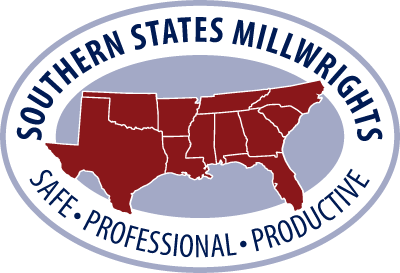
Congress continues to work on approving a $1 trillion bipartisan infrastructure bill and a budget reconciliation bill, both part of the Build Back Better plan that would create jobs for union millwrights and lower taxes, child-care costs, and other expenses for working-class families.
The Infrastructure Investment and Jobs Act, which the U.S. Senate approved in August, would provide $73 billion for electric-grid and power infrastructure, $110 billion for roads and bridges, $65 billion to bring broadband Internet to rural areas, $55 billion for water systems and infrastructure, $25 billion for airports, and more. The House of Representatives must approve the infrastructure bill before the president can sign it into law.
In August, the House approved a budget reconciliation bill that called for $3.5 trillion in spending over 10 years. The budget reconciliation proposal in the Senate was recently cut from $3.5 trillion to approximately $1.9 trillion. The trimmed-down version of the proposal would extend child-tax credits, provide free pre-kindergarten for all 3- and 4-year-olds and tax credits for child-care expenses, offer paid family leave, and add benefits to Medicare, which provides health insurance for Americans 65 and older.
View fact sheets by state about funding included in the Infrastructure Investment and Jobs Act. Read details about what’s included in the $1.9 trillion budget reconciliation bill below.
Child-tax-credit extension
The reconciliation bill would extend for one year the child-tax-credit increase that was part of a COVID relief bill. The increase from $2,000 per child to $3,000 per child for children older than 6 and to $3,600 for children younger than 6 would cut child poverty nearly in half. According to Census Bureau data, the number of families with children reporting not having enough food to eat fell by 25 percent after families received their first expanded child tax credit payment under the American Rescue Plan.
Child-care tax credits and free preschool
Free prekindergarten would be provided for all 3- and 4-year-olds, and middle- and low-income families would receive tax credits to help pay for child care. Parents earning up to 150 percent of their state’s median income (approximately $115,000 nationally) would spend no more than 7% of their income on child care. A tax credit would cover as much as half of a family’s spending on child care – up to $4,000 for one child and $8,000 for two or more children.
The United States currently ranks 35th out of 37 economies tracked by the Organisation for Economic Co-operation and Development in public investment in children from birth to age 5 as a percentage of gross domestic product. The U.S. spends just $500 per year for a toddler’s care, compared to an average of more than $14,000 in advanced countries – meaning we spend more than 28 times less than our competitors. Only about half of 3- and 4- year-olds in the United States are enrolled in early childhood education, compared to more than 90 percent of children in countries such as Germany, France, the United Kingdom, Korea, and Latvia.
Insufficient access to early childhood education and child care undermines U.S. growth and competitiveness. Research shows that every $1 invested in high-quality early childhood care and education can yield $3 to $7 over the long-run. Expanded access to high-quality child care and preschool leads to long-lasting, multi-generational economic benefits for families and children. Children benefit from improved health outcomes and education outcomes, increased likelihood of being employed, and higher earnings in adulthood. Studies find that increased access to child care can also increase the likelihood parents, and especially mothers, are employed and enroll in education and training beyond high school. One recent study of a high-quality preschool program for low-income children found that even the siblings and descendants of children in a preschool program benefit in the long-run. Investing in high-quality child care and preschool can boost productivity, labor-force participation, and economic growth for generations.
Paid family and medical leave
Cuts to the reconciliation bill mean the 12 weeks of paid family and medical leave initially proposed will likely be downsized to four weeks. Still, the United States would join many other nations in giving workers paid time off to care for a new child, deal with a serious health problem, or take care of a sick family member.
Nearly four out of five private sector workers have no access to paid family leave. Compared to 40 other developed countries, the U.S. comes in last in terms of offering parental paid leave. This has severe consequences, with one study finding that expansion of family friendly policies in other advanced countries explains up to 29 percent of the relative decrease in women’s labor force participation in the United States. Research shows paid leave policies increase employee retention and morale, boosting productivity and profitability for employers and contributing to economic growth.
Expanded Medicare benefits
The proposal would add dental and vision insurance and hearing-aid coverage to Medicare, which provides health insurance for Americans 65 and older.
